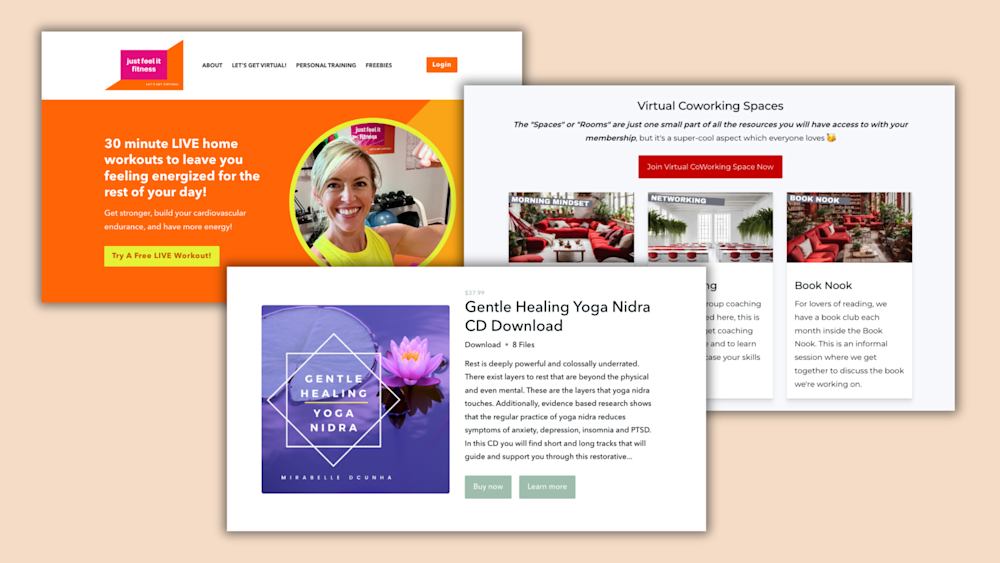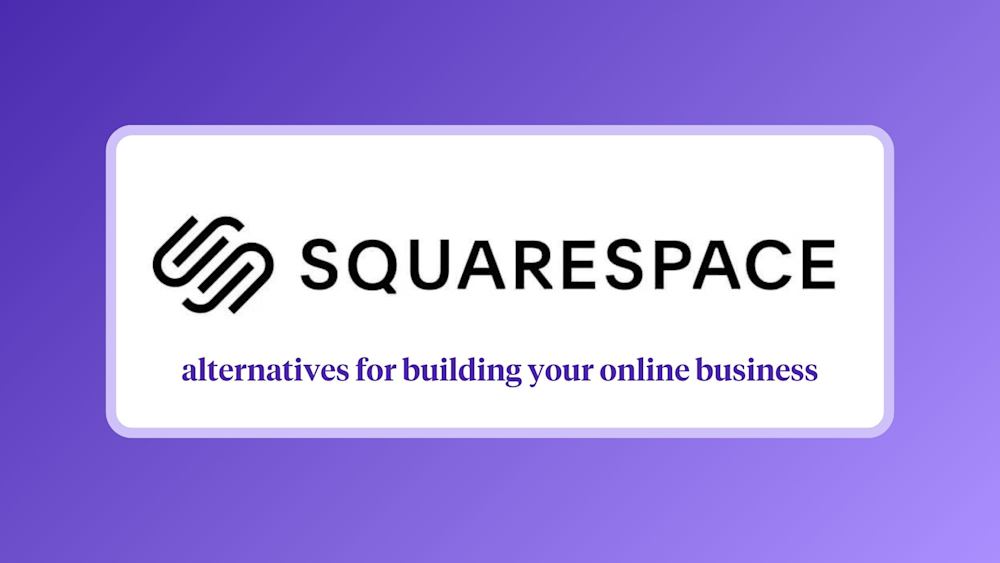It’s no secret that the last two years have brought significant changes to how we work. Some of us started working remotely, some of us lost jobs, some of us found new opportunities, and I’m pretty sure we all finally mastered the art of Zoom.
With all these changes swirling around, one trend is likely here to stay: freelancing.
In the USA, the number of freelancers has grown every year for the past five years and is expected to continue in that direction.
A 2020 Upwork study found that 36% of the American workforce engaged in some kind of freelance work, and freelancers brought in $1.2 trillion in yearly earnings.
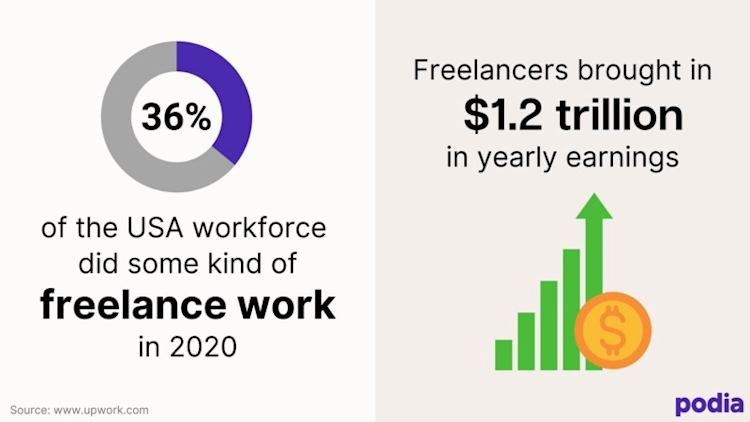
If you’ve ever considered trying this flexible and lucrative workstyle, we’ve got just the guide for you. Let’s take a look at how to make money freelancing, including the tools you’ll need to get started and tips for success.
What is freelancing?
Freelancing means that you’re self-employed and working for companies or individuals on a contract basis. You aren’t considered a full-fledged employee of any one company. Instead, you can take on projects with several different companies or clients.
There’s a lot to love about freelancing. For one, you get to choose your own hours. You can work part-time or full-time and take on as many clients as you have the capacity for.
Freelancers can also set their own pay rates. Over time, this could result in higher earnings than a traditional employment arrangement.
On the flip side, freelancers typically don’t get benefits or paid time off. Income can be inconsistent, and it can be hard work to find your first clients.
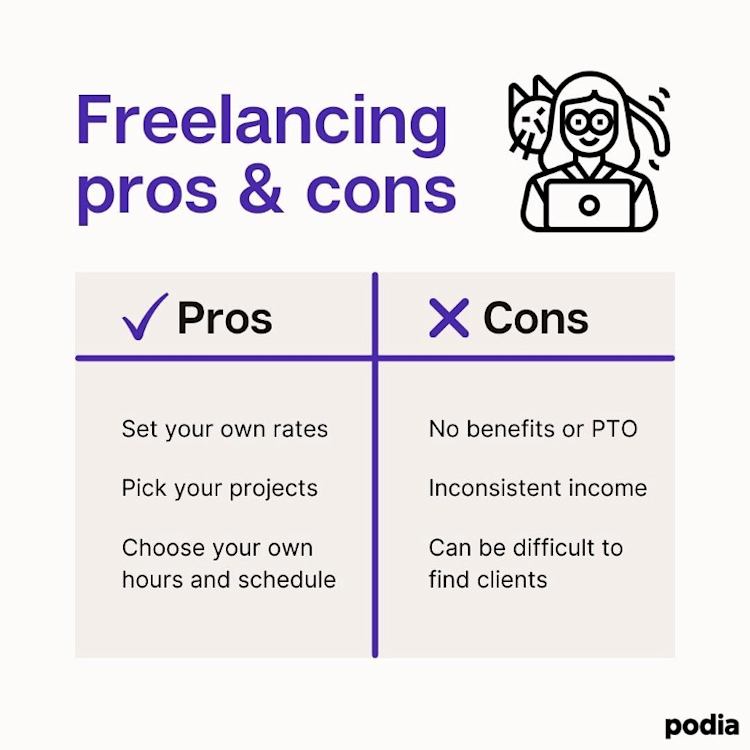
Simply put, freelancing gives participants more control — and more responsibility — over their work lives. Next, we’ll look at some specific reasons people freelance to help you decide if it’s the right fit for you.
Why become a freelancer?
Freelancing is ideal for anyone who wants more flexibility with their time. After all, you’re the one choosing which projects to take on, so you have the final say over your schedule and workload.
For me, this was the biggest motivator when I started freelancing. I wanted to work on projects I was interested in while having the freedom to travel, visit my family, and take an extra day off to binge The Great British Bake Off from time to time.
It turns out, I’m not alone. When asked why they freelance, 71% of freelancers said they enjoy better schedule flexibility, and 88% reported that a primary motivator was having more control over how and when they worked.
For many workers, freelancing can also be a way to earn more money than they would in a traditional full-time job.
30% of freelancers quit their job to start freelancing, and of those people, 65% earn more freelancing than they did at their previous place of employment.
On top of that, freelancers report high overall happiness, ranking their lifestyle four out of five in satisfaction surveys.
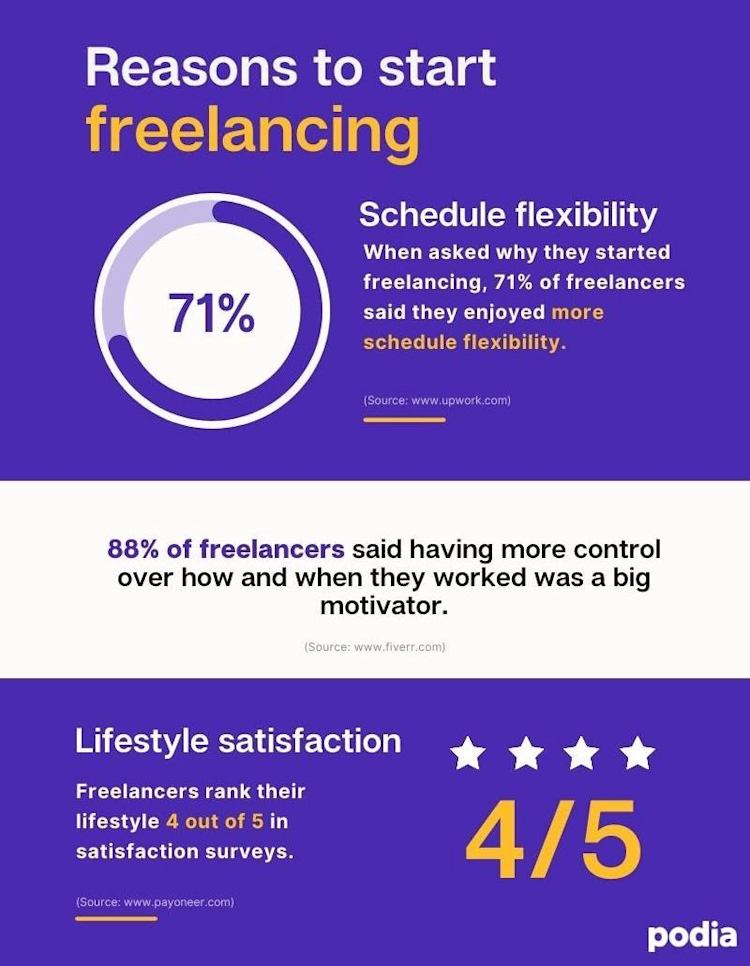
Finally, freelancing can be a great option for people with personal situations incompatible with a traditional 9–5.
48% of freelancers are caregivers, and of those, 76% report that freelancing gives them more availability and flexibility when caring for their loved ones.
33% of freelancers either have a disability themselves or have a family member with a disability. Of those, 72% report that freelancing offered a better environment for addressing those needs.
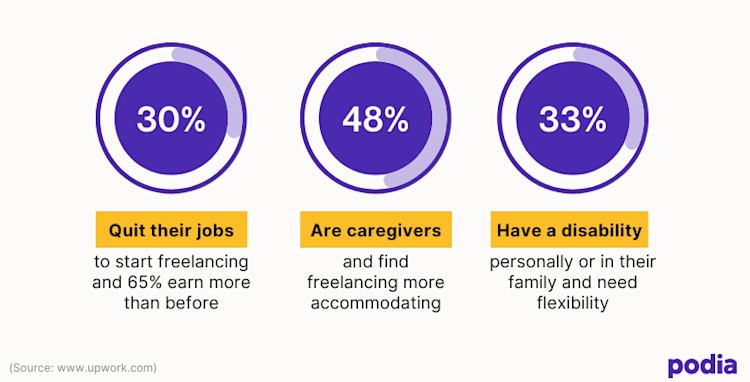
Of course, no job is perfect. Freelancing does have some downsides like no paid time off, inconsistent income, and no benefits. But for many people, the flexibility and earning potential far outweigh the cons.
Alright, you’ve decided to give the freelancer life a try. Before we talk about how to make money freelancing, you’ll need to have the right tools.
What tools do I need to make money freelancing?
In addition to having a skill or service you can offer (more on that in a minute), make sure you have the following:
Website: The first thing you’ll need to start making money as a freelancer is a website. This is how prospective clients will find you, and you can use your site to show off your services, testimonials, and portfolio pieces. You can set up your website with Podia in an afternoon, and there are pre-made sections for answering FAQs, sharing client reviews, and showing off your past work. Podia also has email marketing (which is free for your first 100 subscribers), lead magnets, and email sign up forms so you can start growing your email list with potential clients. (Set up your freelancer website for free today!)
Software: As a freelancer, you’ll likely need to provide your own tools and software to run your business.
For example, if you’re a graphic designer, you might need an Adobe Illustrator or Procreate subscription. If you’re a video editor, you might need your own editing software and stock music subscriptions.
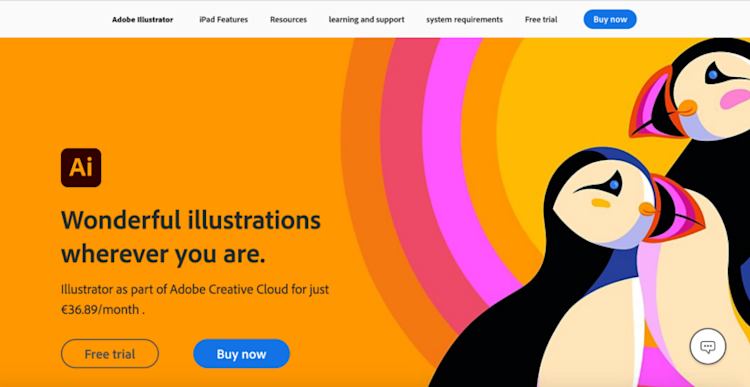
On the backend of your business, you’ll also need tools for onboarding new clients, managing projects, improving productivity, and getting paid. Here are some popular options:
-
Wave: For generating invoices, Wave is free to use. They charge a processing fee for each transaction.
-
Dubsado: Dubsado is an all-in-one business management tool where you can create client intake forms, schedule meetings, send invoices, and manage your projects.
-
Honeybook: Honeybook is another comprehensive tool where you can send invoices, schedule clients, and manage your ongoing tasks.
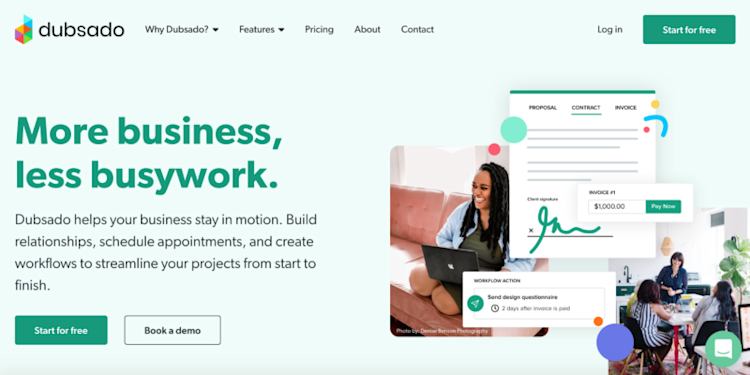
How to make money freelancing online in 7 steps
Step 1: Map out your goals for freelancing
Starting a new freelancing business without a goal is like setting sail without a compass. It’s hard to end up where you want to go without knowing what that endpoint is.
Setting goals for your freelance business can keep you on track. Here are some types of goals to consider:
-
Financial goals: Is there a certain amount of money you want to earn per month or year? Do you intend to freelance full-time or as a side hustle?
-
Time goals: What kind of workload do you want for yourself? How many hours per week do you want to work?
-
Lifestyle goals: Do you want to work from home? Do you hope to take more family vacations away from work?
-
Passion goals: Is there a specific type of project you’d enjoy working on that would fulfill you?
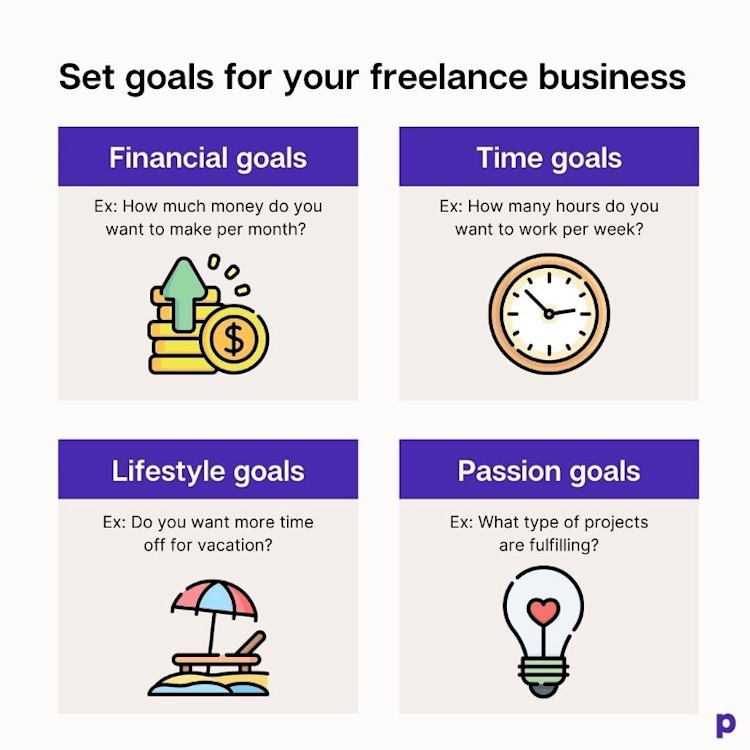
As you create your game plan, it can be tempting to jump into the deep end and throw 100% of your time and energy into freelancing.
However, for most new freelancers, it’s best not to quit your day job right away. Building up clients can take time, and putting financial pressure on yourself could lead you to take less desirable jobs.
Establishing yourself as a freelancer is a long-term process, and it’s normal to start freelancing as a side gig before going all in.
Now, with your long-term freelancing goals in mind, it’s time to decide what to offer your clients.
Step 2: Decide what services to offer
You might already have an idea about what you’ll offer as a freelancer, and if you do, that’s awesome! Some industries naturally lend themselves to freelancing.
But if you’re new to the game and feel stuck in the “what will my services be?” stage, this section will help you get some clarity.
Start by thinking about what you already do well. I know it sounds simple, but some skills that seem intuitive to you might be major pain points for other people.
Maybe you’re excellent at organizing data, or creating logos, or writing interesting articles. Maybe you speak two languages or have a knack for editing YouTube videos.
Think about what kind of work you like doing, what lights you up inside.
Ideas for freelance jobs:
-
Copywriting
-
Article or blog writer
-
Social media manager
-
Website designer
-
Programming
-
Graphic designer
-
UX designer
-
Sales
-
Customer support
-
Language translator
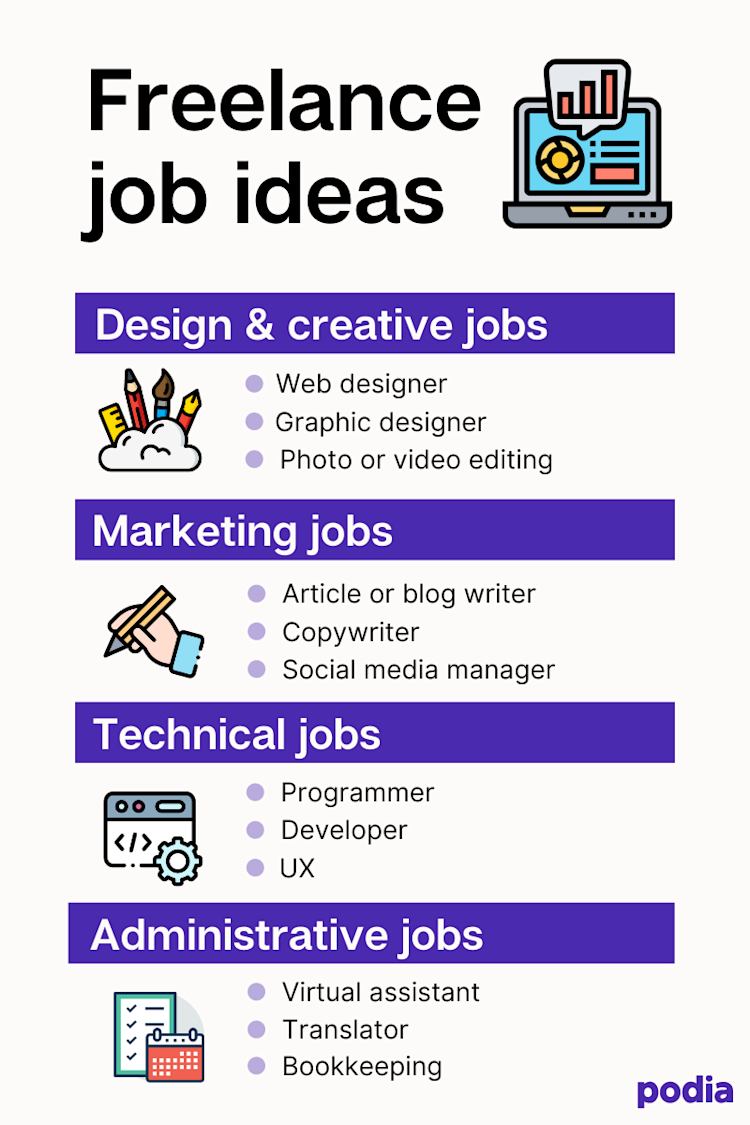
Next, do some research on what’s already out there.
Search for the job you’d like to do on freelance platforms like Upwork and Guru. Here you can see what kind of packages and services people are offering around the world.
When you find a listing similar to what you want to offer, look for past client reviews. This shows you that real people have bought this service in the past. Authentic reviews act as proof of concept that someone will pay for this type of work.
It’s all about finding that sweet spot of what you know how to do, what you want to do, and what people will pay for.
Finally, think about ways to niche down. The more specific you get, the better.
When most people hire freelancers, they’re looking for a very specific thing. If you can provide that thing, they’re more likely to go with you over a competitor.
For example, an ebook about generic Thanksgiving recipes is not specific, but this “Vegan Italian Thanksgiving” recipe book by Pasta-based is super niche.
If you’re looking for vegan Thanksgiving recipes, which would you choose? I’d dive into that delicious butternut squash risotto!

The same works for freelancers. Suppose someone’s looking for a freelance writer to help with sales copy. They’re most likely going to choose a sales copywriting specialist over a general writer.
Niching down allows you to offer more advanced services in one specific area, resulting in less competition, higher rates, and more authority.
Step 3: Identify your ideal client
Next, think about the ideal client you’d like to work with. You might prefer freelancing for individuals, small business owners, large companies, or that cool new startup everyone’s talking about.
Think about what this client needs, their struggles, what they want to outsource, and where they hang out online. This way, you can tailor your marketing efforts to the right people.
The nice thing about freelancing is that you can choose your own clients and projects, so why not choose something you love?

64% of freelancers say that they picked this lifestyle because they get to work on projects they find meaningful and interesting, and you should too.
Step 4: Create your packages and pricing
Another perk of being a freelancer is that you can set your own pricing. Most freelancers structure their pricing one of three ways:
Hourly: Hourly rate gigs are exactly what they sound like. You set a price that you’ll be paid for each hour of work. A client hires you to do a task, and you track how long it takes. Once it’s complete, you bill the client for the time it took.
Unsure of how much to charge? To give you a ballpark figure, a 2020 Payoneer study of over 7,000 freelancers from 150 different countries found that freelancers charge $21 per hour on average.
You may need to adjust this number based on where you live, what service you provide, and your experience level, but it’s helpful to have a starting point.
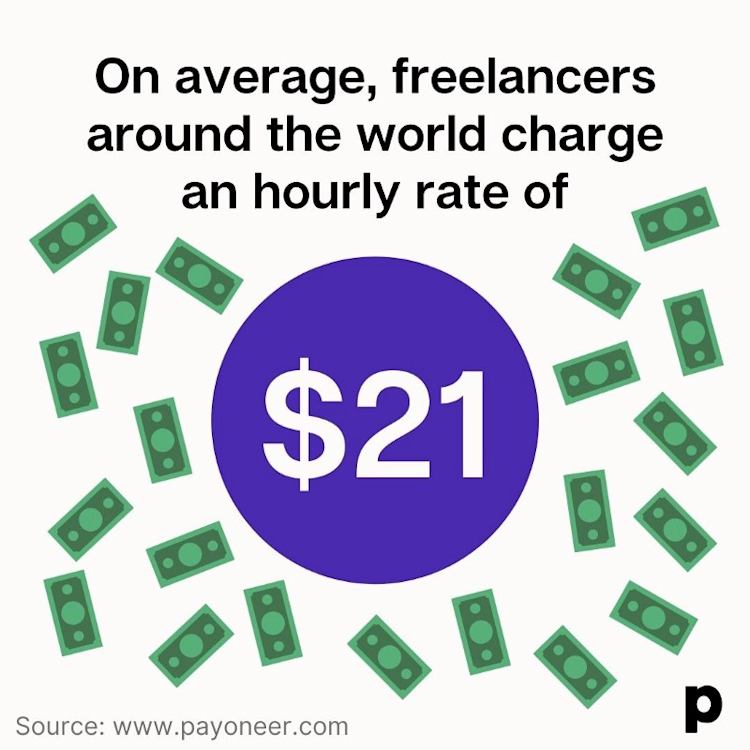
Keep in mind, while the hourly pay structure is simple, it’s not ideal for scaling your business. Eventually, you’ll get faster and more efficient at the services you offer, so it might make more sense to use a project-based model.
Project-based: Project-based gigs mean that you and the client agree on a full price for a project, regardless of how many hours it takes you to finish it.
For example, if you’re a website designer, you might charge a flat rate of $3,000 to build a new website for a client.
When structuring project packages, be clear about the number of revisions and the timeline so everyone is on the same page.
Retainer: Retainer packages are ideal for most freelancers since they provide income consistency. With a retainer, your client pays you a recurring amount for your services on an ongoing basis.
Retainers save time for both parties because you’re not constantly onboarding or offboarding. You can learn their systems and deliver consistent work specific to their preferences instead of meeting new clients every few weeks.
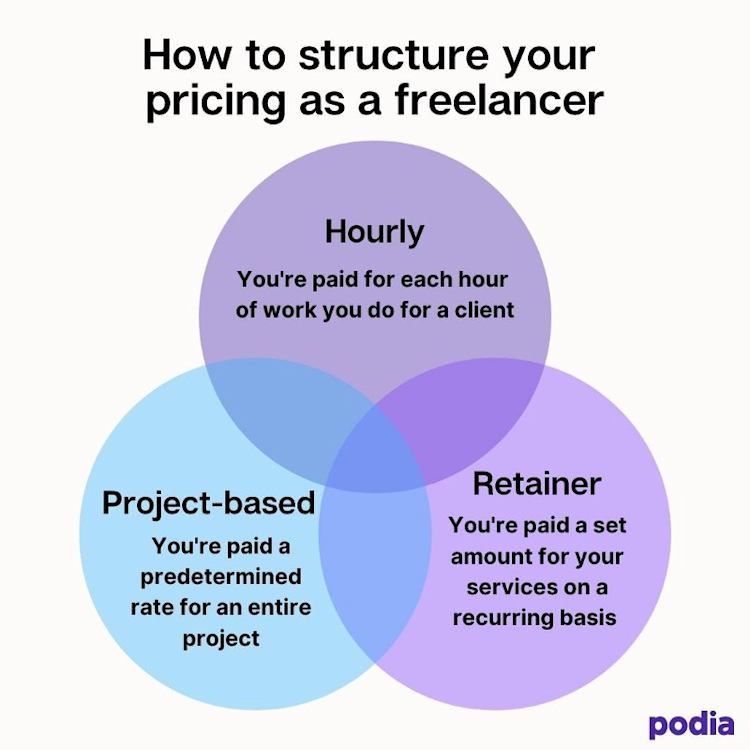
No matter which pricing model you choose, make sure that you account for taxes when deciding your rates. As a freelancer, you’ll likely be responsible for handling taxes on your own, and it’s better to have more saved up than less.
Remember, your prices can and should change over time. As you get more skilled, you can increase your rates. That’s the beauty of being a freelancer.
Step 5: Set up your website and freelancing portfolio
Now that you have an idea of your freelance services and prices, it’s time to tell the world that you’re open for business. The best way to do this is through a website.
All Podia users have access to our free website builder, which allows you to create and customize unlimited pages with just a few clicks. Try it for yourself - build a beautiful website with a free 30-day trial.
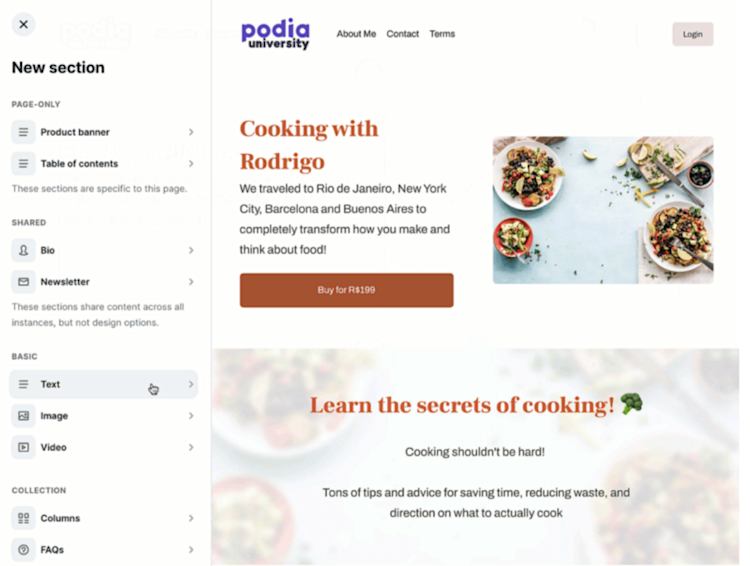
Here are some pages and sections you can include on your website.
-
About page: This is where you tell prospective clients more about yourself.
-
Services page: Here, you’ll outline your services and packages in detail.
-
Portfolio pieces: Showcase your best work so future customers know what to expect.
-
Testimonials: Testimonials and reviews add legitimacy. Here are some ways to ask for them.
-
Contact information: Make it easy for prospects to get in touch with you.
Take a look at the website of virtual assistant and Podia Pro Michelle Parks. Her website has a clear breakdown of her services as well as detailed client reviews, a lead magnet, an about page, and resources.
As a potential client, it’s easy to find the information I need in one easy-to-navigate site.
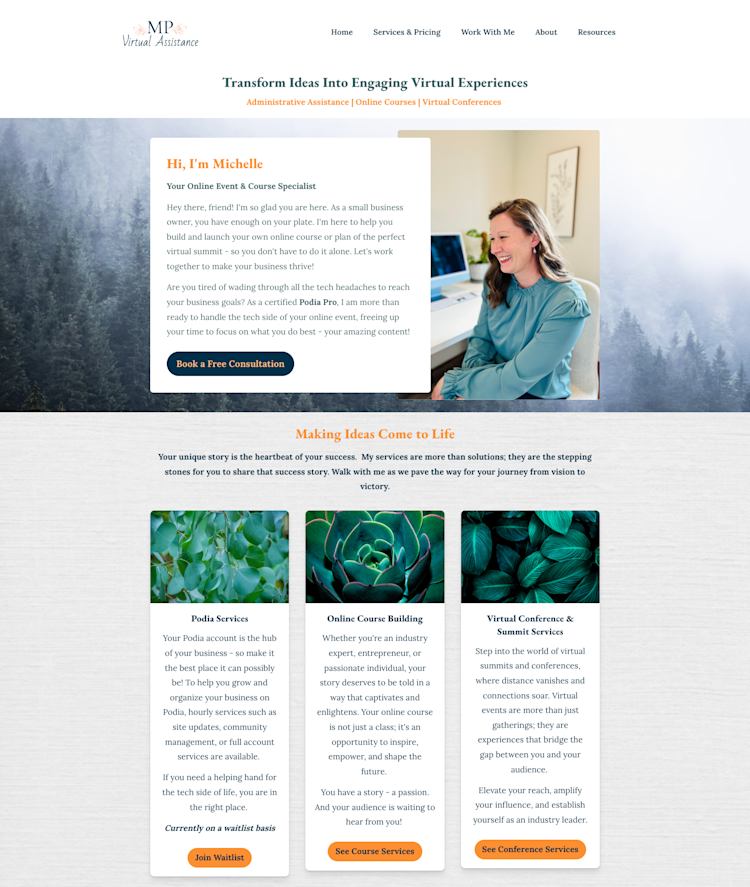
During this setup stage, you should also start thinking about how you’ll organize the backend of your business. Project management tools can help you balance multiple clients and administrative tasks.
You’re not paid for the hours you spend invoicing, onboarding, and bookkeeping, so you’ll need a solid system to expedite these activities and minimize unpaid tasks.
Then, once you’ve got your portfolio website and behind-the-scenes processes ready to go, you’re ready to start booking clients.
Step 6: Find clients you enjoy
When you’re first starting out, finding clients can involve some hustle. The good news? With how interconnected we are these days, there are many avenues to find customers in need of your services.
I’ve met freelance clients at industry conferences, on social media, through remote job listing sites, and even through sending emails to people I looked up to and wanted to work with.
Here are some ways to find your first freelance clients:
Use social media. Post about your services on Facebook, LinkedIn, and Instagram. 74% of freelancers use social media to promote their business, so this can be an excellent place to find possible leads.
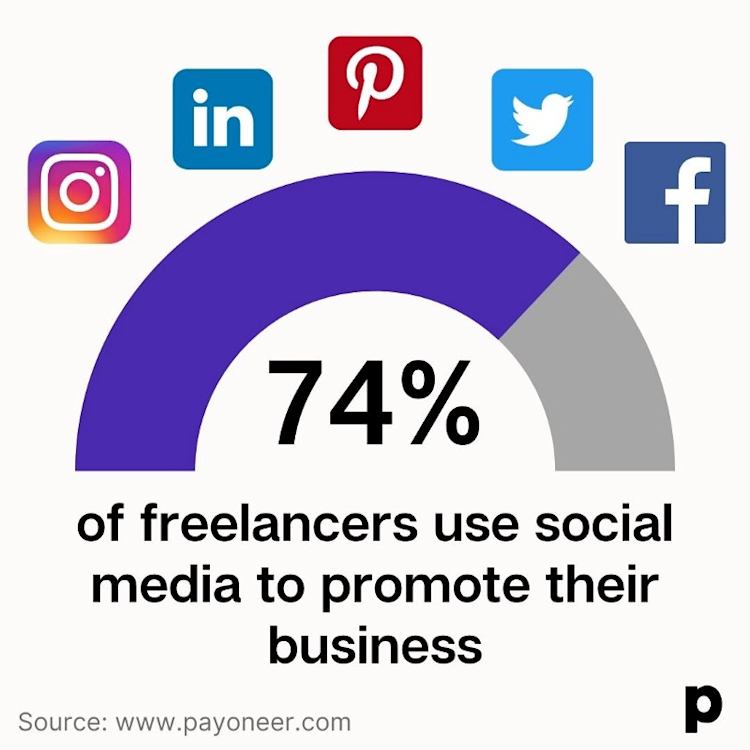
Ask your personal network. You never know who in your circle might need a new website or virtual assistant.
Start a blog. Start a blog and write content that interests your ideal audience. Bonus points if you use SEO best practices to show up higher in the search engine results.
For example, if you offer web design services, you could write blog posts like “5 things to include on your website home page” or “Common website mistakes and how to fix them.”
In the post, mention that you offer website services if the reader needs more help.
You can also write guest blog posts for other sites in your industry. This gives you access to a larger audience and can help you build credibility.
Podia has blogging and SEO features on all plans, so you have everything you need to start your blog all in one place.
Explore job boards: Look for freelance job listings on websites like FlexJobs, We Work Remotely, and RemoteCo.
These boards have all kinds of jobs, so you’ll need to use the filters to find freelance or contract opportunities.
For example, on We Work Remotely, click on “Job Seekers” and then select “Advanced Job Search”. Under the “Job Types” dropdown, select “Contract” to find freelance and independent contractor gigs.
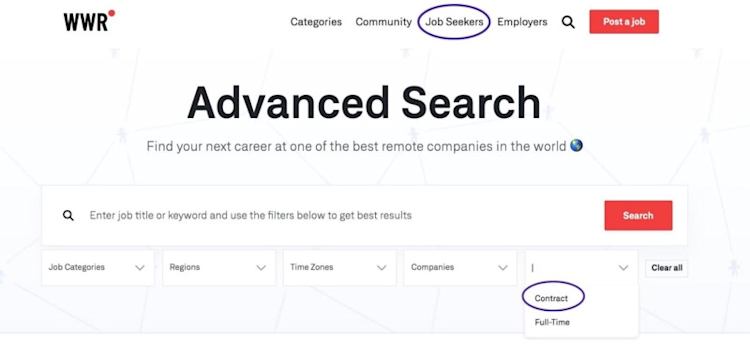
Ask for referrals. Some of the most successful freelancers I know are almost entirely referral-based, and I’ve personally met some amazing clients through word-of-mouth referrals.
Finding clients is an exciting time in your business, but as you grow, resist the temptation to bite off more than you can chew. One way to avoid becoming overbooked is to set and uphold working hours for yourself.
Without the structure of a traditional full-time workday, many freelancers, myself included, fall into the trap of working 24/7 and hustling to the point of exhaustion. This won’t get you anywhere.
Choose your working hours and stick with them. If you’re at capacity, it’s okay to say no to new gigs. Take time off when you need a break. Freelancing is intended to give you more freedom, not less.
Step 7: Scale your business
Now that your freelance business is chugging along, it’s time to think about scaling. Scaling a business means setting it up so it can grow without limitations.
As an independent freelancer, your time is your biggest limiting factor. There’s only one of you and 24 hours in a day, so to maximize your earnings, you want to avoid trading hours for dollars.
Here are some ways to scale your freelance business for the long term:
Continue your education: Now that you’re the boss, you’re responsible for your own education and development. Take online courses, attend industry conferences, and learn as much as possible to go deeper into your niche.
Say you’re interested in improving your freelance writing skills. 10X Landing Pages, an online course devoted to uplifting conversions with copy, could do the trick. This could be a great program for enhancing your writing skillset, which could lead to future clients.

By continuing your education, you can offer more advanced services and increase your prices.
59% of freelancers engage in skills training, so consider this to be an essential part of building your freelancing business.
Create an online course or digital product: Selling online courses and digital products can be a great way to supplement your freelance earnings with passive income.
It’s also a way to share your knowledge with people who might not have a budget for your freelance services but still want to work with you.
For example, if you’re a freelance social media manager, you could create an online course about Instagram for beginners. You could also create Instagram post templates to sell as a digital product.
No matter what you create, advancing your skills and diversifying your income can help you scale your freelancing business long into the future.
Best of luck out there. You got this!


